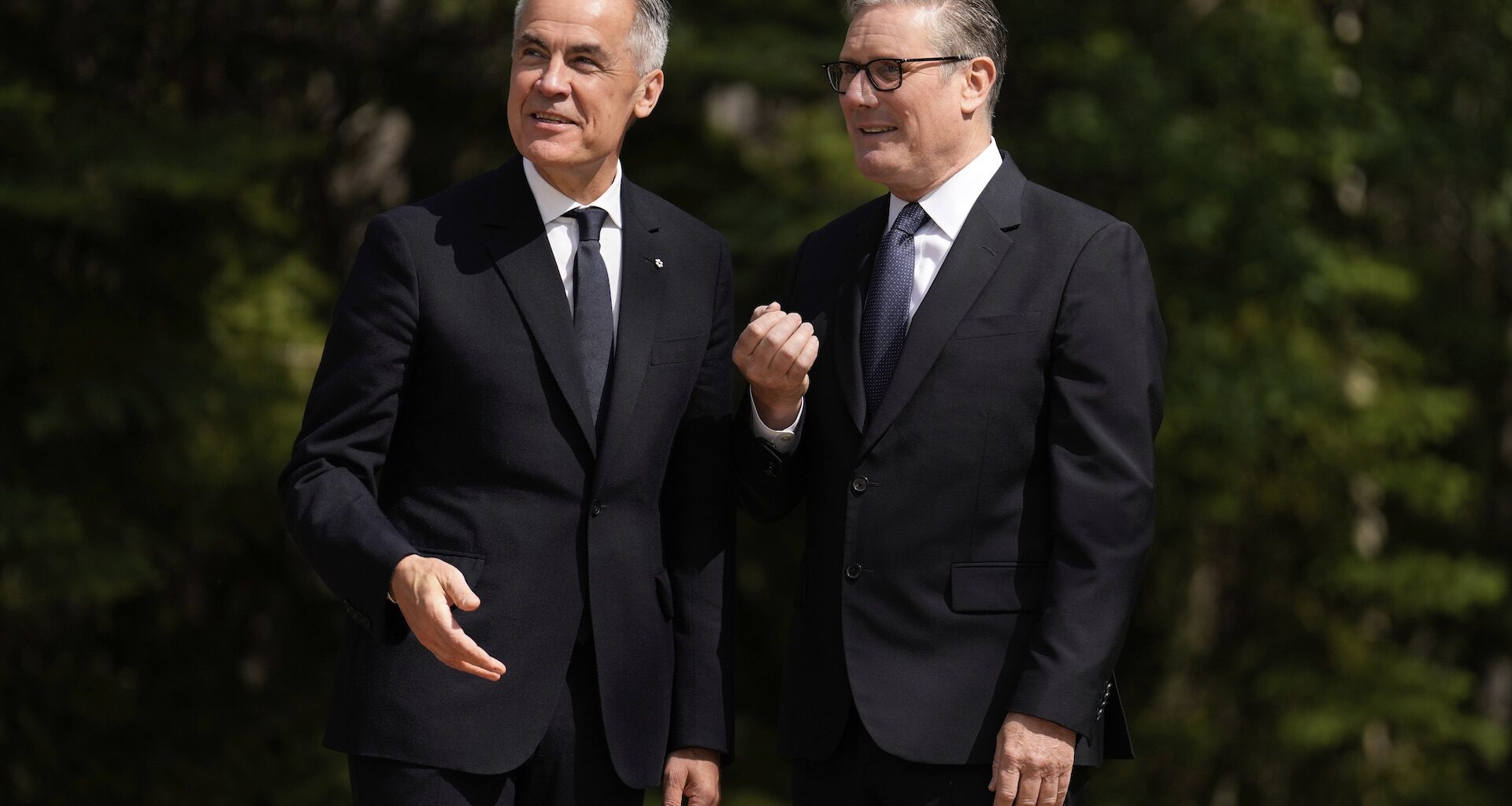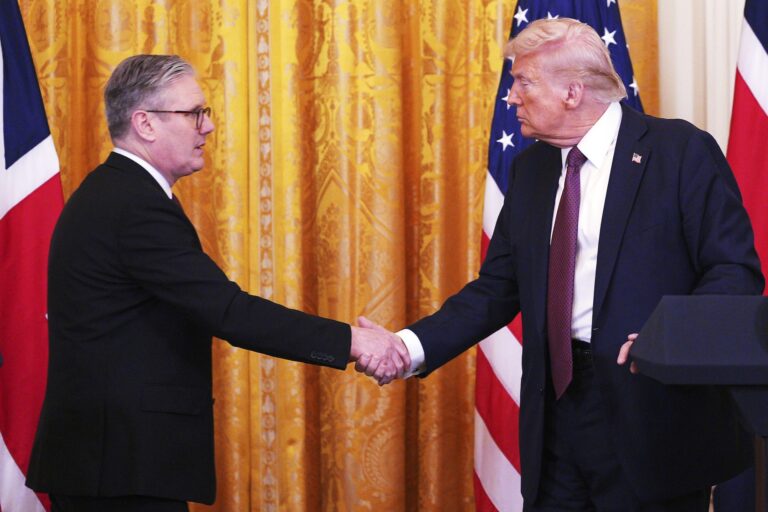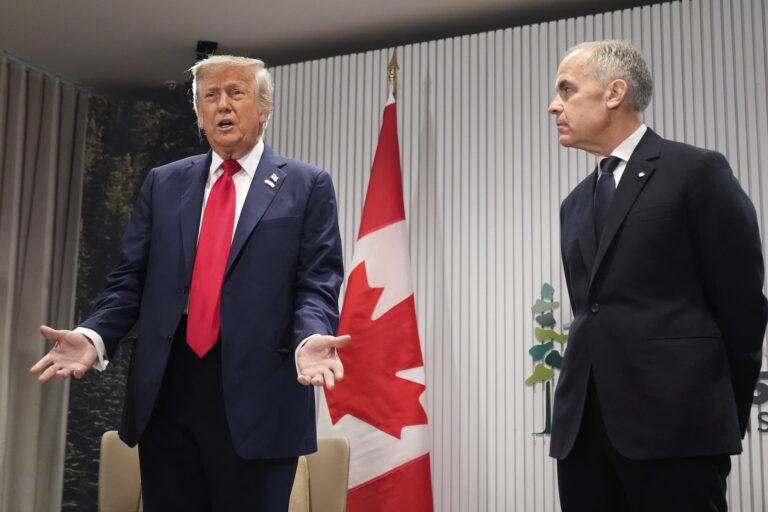KANANASKIS, ALTA. — Canada and the United Kingdom will strengthen ties by taking a fresh look at old trade irritants—including beef and cheese—and scanning the horizon for ways to grow the innovation economy together, says Britain’s envoy to Ottawa.
“Essentially, it’s a step back to say, ‘OK, what do we want to talk about? Where do we want to drive the relationship forward?” U.K. High Commissioner Rob Tinline said Monday in an interview with The Logic at the G7 summit in Kananaskis, Alta.
Talking Points
- Canada and the United Kingdom can grow the innovation economy together even without moving past impasses over cheese and beef, says British high commissioner
- A new “growth and innovation partnership” includes $14.8 million to support joint Canada-U.K. research and development in biomanufacturing
On Sunday, Canada’s Prime Minister Mark Carney and British Prime Minister Keir Starmer agreed to set up a working group to figure out how to expand their economic relationship into new areas, including digital trade, and to tackle barriers to market access. The U.K. is Canada’s third-largest trading partner and yet the volume of goods exchanged by the countries is relatively small. About 3.6 per cent of Canada’s exports went to the U.K. in 2024, while the U.K. made up just 1.2 per cent of Canada’s imports.
That would essentially revive stalled trade talks between the two Commonwealth allies. Canada and the U.K. struck a temporary bilateral deal after Brexit severed the U.K. from the Canada-European Union Comprehensive Economic and Trade Agreement (CETA). The provisional deal reached in 2021, which is still in effect, eliminates about 99 per cent of the tariffs on Canadian exports to the U.K. covered by CETA. One difference is that it let British cheese be sold duty-free in Canada’s supply-managed dairy market until the end of 2023. Talks for a permanent pact broke off in January 2024 due to the impasse over cheese and a U.K. ban on hormone-treated beef.
Related Articles
A lot has changed since then.
U.S. President Donald Trump began his trade war with tariffs on Canada, Mexico and China, and then took aim at other countries, including the U.K., with so-called reciprocal tariffs in April. On the sidelines of the G7 summit on Monday, Trump and Starmer firmed up some details of the entente they reached last month. The U.S. is exempting British aerospace parts and allowing up to 100,000 British cars to enter the U.S. with a 10 per cent duty instead of 27.5 per cent. A 10 per cent baseline tariff remains on all other goods, while an an earlier promise to exempt British steel and aluminum from 25 per cent tariffs is still being negotiated.

British High Commissioner Rob Tinline. Photo: Instagram/Screengrab
Meanwhile, Canada and the U.K. have elected new prime ministers who are looking to expand trade beyond the U.S. As Tinline noted, neither was involved in the two countries’ earlier round of bilateral negotiations, nor the decision to suspend them. “We will have to have those conversations to see if there is a landing point on some of those difficult agriculture and food issues,” Tinline said.
The joint statement from Carney and Starmer, who spent time together in Ottawa this weekend before the G7 summit, did not guarantee they would overcome those stumbling blocks. The countries will, however, agree to co-operate in the meantime on artificial intelligence, quantum computing, semiconductors and biomanufacturing, critical minerals and nuclear energy projects.
The “growth and innovation partnership” includes $14.8 million to support joint Canada-U.K. research and development in biomanfacturing—such as vaccines—and a pledge to develop secure transatlantic quantum communications. “There are a whole range of partnerships that were threaded through that statement, where the U.K. and Canadian industries are complementary, where our researcher and innovation funding agency is already funding collaborations and is looking to fund more collaborations—where we can be more effective together,” Tinline said. “It’s a way of trying to make sure that we’re linking up the right institutions in the U.K. and Canada to make sure that it works for both of us and drives more innovation.”
“Nobody in NATO wants a position where every country is building its own tank.”
Toronto-based artificial intelligence firm Cohere, whose CEO Aidan Gomez met Carney and Starmer in Ottawa on Sunday, is part of that plan. A memorandum of understanding between Cohere and the U.K. government says they will explore “ambitious, safe, and responsible adoption of AI in defence contexts.” That could involve using AI for training and development, the memo says, as well as “informing the development of policy positions.”
Tinline said the U.K. government, which is already using Cohere tools in some areas, wants to boost efficiency in the public sector. An AI-powered multi-language translation tool, he said, could help with policing in situations when people are using slang or speaking foreign languages. “You can allow policing to be more effective, because you can process data in different languages much more quickly to give police officers what they need,” he said.
Canada and the U.K. can also help each other out in defence industries, Tinline said. He recently visited the Irving Shipbuilding site in Halifax where the new River-class destroyers are being built for the Royal Canadian Navy. The design is based on that of the Type 26 frigate by British military firm BAE Systems, which Tinline says helps bring down the cost.
There is room for more. Carney announced last week that Canada will boost defence spending by about $9 billion this year—speeding up the timeline to hit the NATO defence-spending target of two per cent of GDP. Starmer committed to having U.K. defence spending reach 2.5 per cent of GDP by April 2027. “Those opportunities to work together to make sure that we can spend the money efficiently and effectively will only grow,” said Tinline. “Nobody in NATO wants a position where every country is building its own tank,” he added.“We need to work out how we can operate so we get that capability quickly, effectively and interoperably.”


